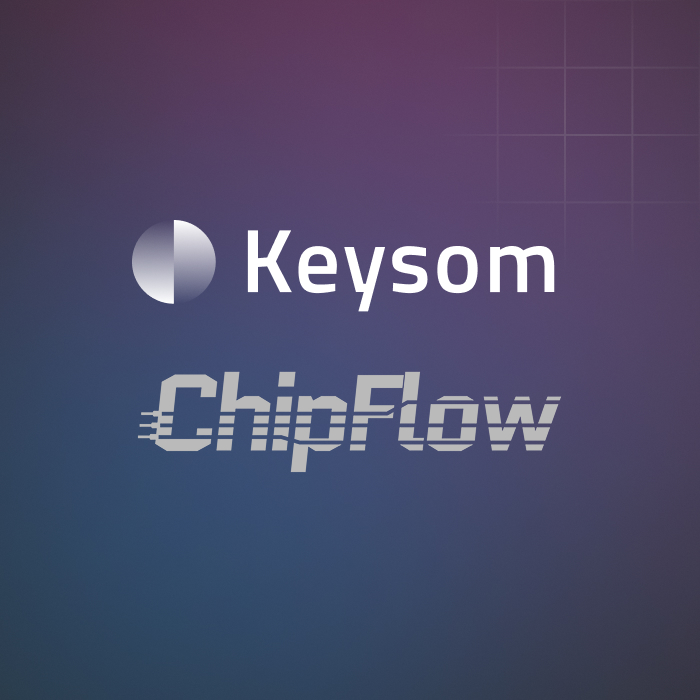Key Takeaways
- RISC-V is reshaping automotive chip design through its open-standard architecture, offering flexibility and cost efficiency.
- Keysom and Chipflow are facilitating the adoption of RISC-V in automotive systems by focusing on design automation and tool development.
- The European Chips Act is a key driver for RISC-V adoption in Europe, providing funding for research and innovation in semiconductor technologies.
by, Tomi Rantakari CEO ChipFlow & Luca Testa COO Keysom

The automotive industry is undergoing a major transformation, driven by electrification, the rise of new market players, and the rapid adoption of emerging technologies such as AI. Among the most significant advancements is the growing adoption of RISC-V, an open-standard instruction set architecture (ISA) that is reshaping how automotive chips are designed and deployed. Companies like Keysom (keysom.io) and Chipflow (chipflow.io) are playing a crucial role in this shift, helping to navigate the opportunities and challenges of RISC-V in the automotive sector.
Progress in RISC-V Adoption
RISC-V offers a compelling alternative to proprietary architectures, providing flexibility, cost efficiency, and a growing ecosystem of development tools. In automotive applications, its modularity allows manufacturers to tailor processors for specific workloads, optimizing performance and power efficiency. With the increasing complexity of software-defined vehicles and real-time processing requirements, RISC-V’s open ecosystem fosters innovation by enabling chip customization at all levels.
Chipflow and Keysom have been actively contributing to this progress, focusing on design automation, tooling, and reference architectures and IPs that accelerate the adoption of RISC-V-based solutions in automotive systems. Both companies help reduce barriers to entry, ensuring a smoother transition for automotive players looking to integrate RISC-V into their next-generation platforms.
Challenges in Automotive Integration
Despite its advantages, RISC-V faces several challenges in automotive applications. The industry’s strict safety and reliability requirements necessitate extensive validation and compliance with standards such as ISO26262.
Additionally, transitioning from well-established proprietary architecture requires significant investment in software development, ecosystem support, and integration with existing automotive workflows.
Keysom and Chipflow recognize these challenges and are working to address them through industry collaborations, improved IP customization, toolchains, and enhanced verification methodologies. Developing a robust software ecosystem, and functional safety-certified toolchains, remains a top priority to ensure that RISC-V can meet the demands of mission-critical automotive applications.
The Role of the European Chips Act
One of the key drivers of RISC-V adoption in Europe is the European Chips Act. This initiative aims to enhance Europe’s semiconductor capabilities, ensuring supply chain resilience and fostering innovation in critical technologies, including open-source processor architectures like RISC-V.
Under the “Chips for Europe Initiative,” significant investments are being made to support research, pilot production, and the development of next-generation semiconductor technologies. This initiative aligns with the vision of Keysom and Chipflow, both of which are committed to advancing open hardware solutions that provide greater flexibility and sovereignty in automotive chip design. By leveraging the funding and infrastructure provided by the Chips Act, both companies are strengthening their efforts to build scalable, high-performance RISC-V solutions tailored for automotive applications.
What’s Next for RISC-V in Automotive?
The future of RISC-V in the automotive industry looks promising, with increasing investments, growing industry adoption, and expanding ecosystem support. As industry moves toward software-defined vehicles, the demand for flexible, customizable hardware will continue to rise.
Keysom and Chipflow remain at the forefront of this evolution, driving advancements in RISC-V-based automotive processors. By focusing on design automation, open-source collaboration, and compliance with industry standards, both companies are helping pave the way for a more open and innovative automotive semiconductor landscape.
As RISC-V matures and gains traction in safety-critical applications, collaboration and ecosystem growth will be essential. The path toward a more open, customizable, and efficient automotive hardware future is becoming increasingly clear. The next few years will be crucial in shaping the role of RISC-V in vehicles, and Keysom and Chipflow are committed to contribute to this transformation.
Also Read:
CEO Interview with Cyril Sagonero of Keysom
Share this post via:






Comments
There are no comments yet.
You must register or log in to view/post comments.